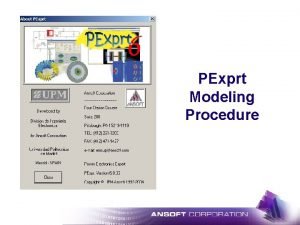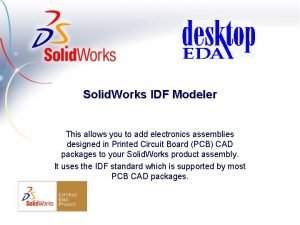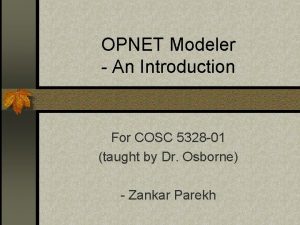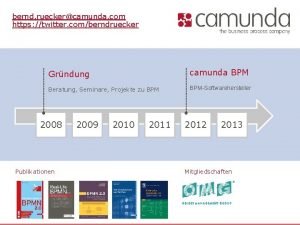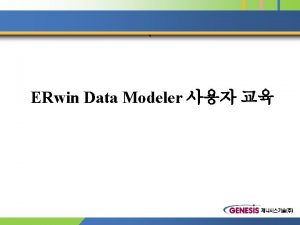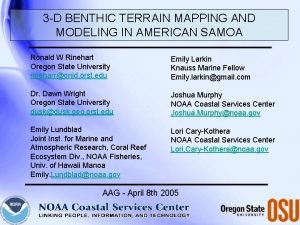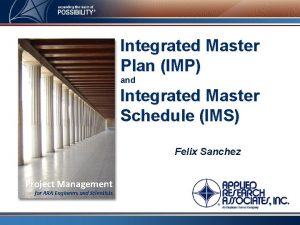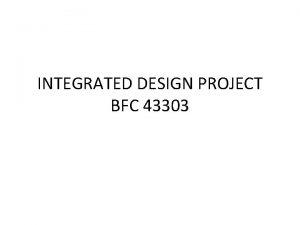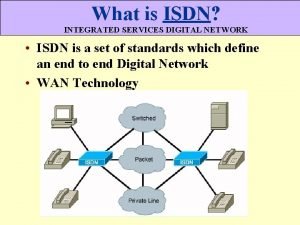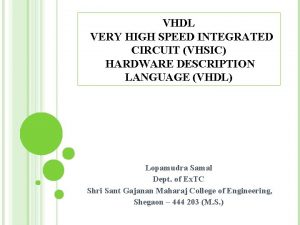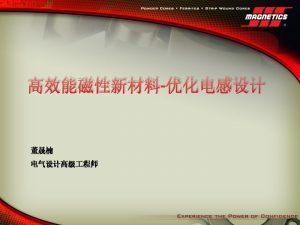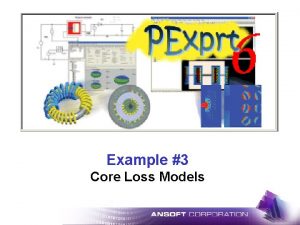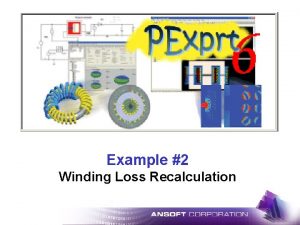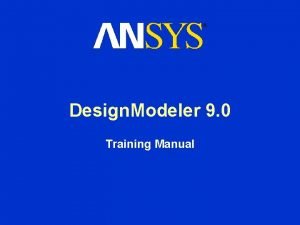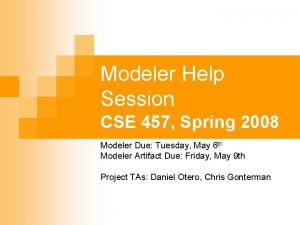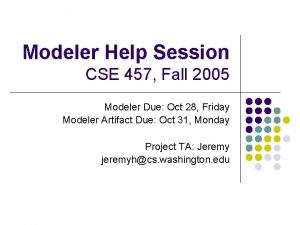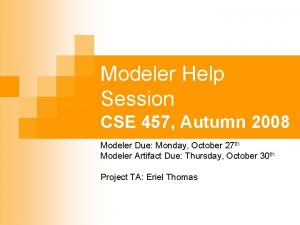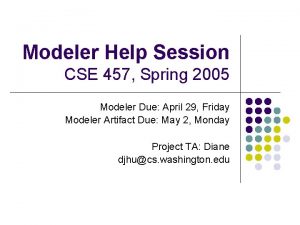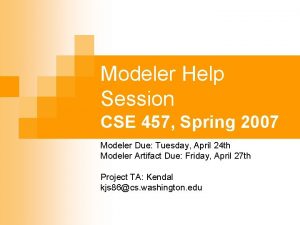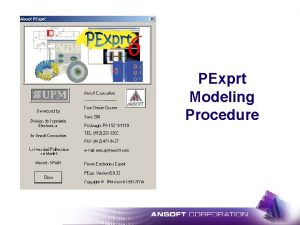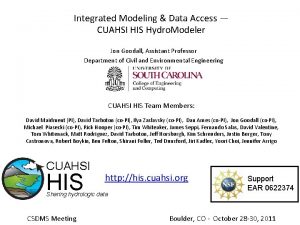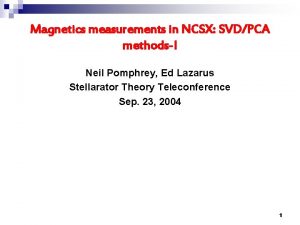Example 9 Integrated Magnetics Example Open PExprt Modeler

![Open PExprt Modeler [PEmag] application This example shows how to setup and solve an Open PExprt Modeler [PEmag] application This example shows how to setup and solve an](https://slidetodoc.com/presentation_image_h2/9541f1366d22c2249fa294f61978a979/image-2.jpg)













![Select “Winding Setup [Left Leg]” Click on winding setup for each leg to list Select “Winding Setup [Left Leg]” Click on winding setup for each leg to list](https://slidetodoc.com/presentation_image_h2/9541f1366d22c2249fa294f61978a979/image-16.jpg)










- Slides: 26

Example #9 Integrated Magnetics Example
![Open PExprt Modeler PEmag application This example shows how to setup and solve an Open PExprt Modeler [PEmag] application This example shows how to setup and solve an](https://slidetodoc.com/presentation_image_h2/9541f1366d22c2249fa294f61978a979/image-2.jpg)
Open PExprt Modeler [PEmag] application This example shows how to setup and solve an Integrated Magnetics model, which has windings on all three core legs. Note: In the Maxwell Projects panel, create a PEmag project instead of a PExprt project. Integrated Magnetic models cannot be generated from PExprt 2

Select File/New for a new project Opening PEmag from Maxwell Control Panel, a new project is opened by default 3

Select E 25/10/6 core from Ferroxcube library Un Ferroxcube library, select E 25/10/6 and drag the core on the “cross section area” to assign it Note: Only EE, EI, UU and UI cores are valid for Integrated Magnetics 4

Edit core properties and select “Double 2 D” Double click on core element in library tree to edit 5

Select winding strategy “ 1 layer concentric” from Ferroxcube library On Ferroxcube windings tab, drag the “ 1 layer concentric” winding strategy and drop it on the “cross section area” to assign it 6

Select winding strategy “ 3 layer concentric” from Ferroxcube library On Ferrocube windings tab, drag the “ 3 layer concentric” winding strategy and drop it on the “cross section area” to assign it 7

Assign AWG 20 wire to each layer of “ 3 Layer Concentric” winding strategy Select 3 Layer Concentric Drag AWG 20 wire and drop it on the layer to assign it 8

Assign 14 turns to each layer Right click on each layer symbol to edit properties and assign 14 turns 9

Assign “AIR_200 um” insulator to the insulator layer of “ 3 Layer Concentric” winding strategy Drag the AIR_200 um insulator and drop it on the layer to assign it 10

Assign 12. 5 mm to the layer height Right click on the layer to edit properties and change to 12. 5 mm high 11

Connect layers as shown in the picture Use “Connections/Add” to add connections to both winding A and winding B 12

Assign AWG 18 wire to the layer of “ 1 Layer Concentric” winding strategy and assign 11 turns to the layer Click on 1 Layer Concentric winding Drag AWG 18 wire and drop it on the layer to assign it Right click on the layer to edit properties and assign 11 turns 13

Connect layers as shown in the picture Use “Connections/Add” to add connections 14

Select “Current Design” tab Information for each core leg appears 15
![Select Winding Setup Left Leg Click on winding setup for each leg to list Select “Winding Setup [Left Leg]” Click on winding setup for each leg to list](https://slidetodoc.com/presentation_image_h2/9541f1366d22c2249fa294f61978a979/image-16.jpg)
Select “Winding Setup [Left Leg]” Click on winding setup for each leg to list Available Winding Setups under Available Elements 16

Select “ 1 Layer Concentric” from the available elements list Click on Winding setup [Left Leg] and then 1 Layer Concentric to assign it 17

Repeat the two previous steps for the right leg Click on Winding setup [Right Leg] and then 1 Layer Concentric to assign it 18

Select 3 F 3 core material from Ferroxcube library Drag 3 F 3 core material and drop it on the “cross section area” to assign it Click on “OK” when the Al dialog appears Click on “OK” when the Core Properties dialog appears 19

The Magnetic Component Definition is done and ready for modeling Click on “ 2 D” button to generate the model Model should take approximately 8 minutes to be generated 20

Results Choose Results / FEA Based (2 D) / FEA Based Results (2 D) to view calculated parameters for the Pemag model 21

Results: Small Signal test available Use “ResultsUsing the modelSmall Signal Test” or click on toolbar button to define the tests 22

Viewing Maxwell 2 D Project Choose Modeler / FEA Based Modeler (2 D) / Maxwell 2 D link / Eddy Current to open the Maxwell 2 D project 23

Note: In Simplorer, the model can be inported using the Interface 6 library and the PExprt element. Note: The nodes of the model are clearly named in the model netlist and in the model symbol 24

Note: Different bobbins can be assigned to each core leg Open “EE_Integrated” example 25

Note: Planar Integrated can also be defined Open “EI_Integrated_Planar” example 26
 Pexprt
Pexprt Open innovation open science open to the world
Open innovation open science open to the world Idf modeler
Idf modeler Sql
Sql Eclipse data modeling
Eclipse data modeling Benthic terrain modeler
Benthic terrain modeler Opnet tutorial
Opnet tutorial Sap predictive analytics demo
Sap predictive analytics demo Httptwitter
Httptwitter Turbine operation
Turbine operation Sql developer modeler
Sql developer modeler Vertical
Vertical Repeat modeler
Repeat modeler Amway fast track
Amway fast track Benthic terrain modeler
Benthic terrain modeler On delay timer symbol
On delay timer symbol Open hearts open hands
Open hearts open hands Integrated quote example
Integrated quote example Integrated master plan example
Integrated master plan example Integrated quotation example
Integrated quotation example Integrated design project report example
Integrated design project report example Indirect quotation
Indirect quotation Integrated crisis early warning system
Integrated crisis early warning system Who traditional medicine strategy 2014–23
Who traditional medicine strategy 2014–23 A digital network
A digital network Second order integrated rate law
Second order integrated rate law Vhsic
Vhsic
